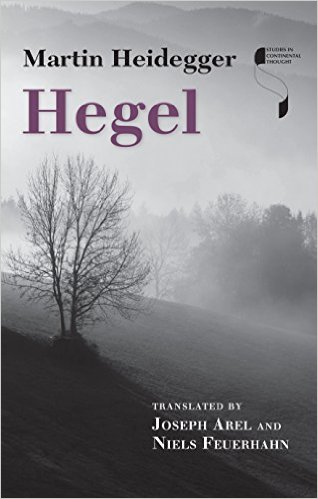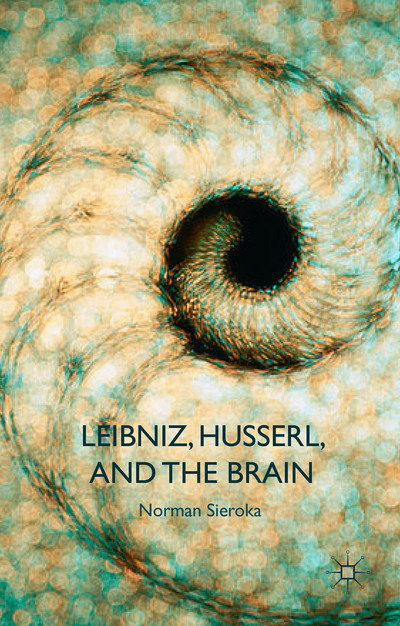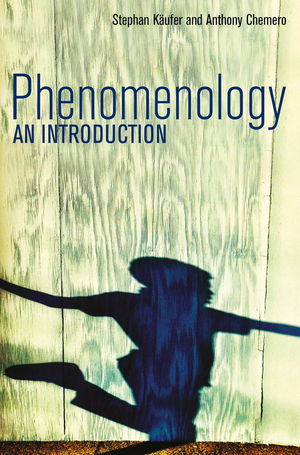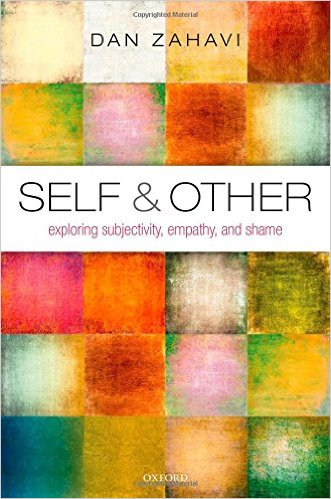 Hegel
Hegel
Studies in Continental Thought
Indiana University Press
2015
Hardcover
168
Reviewed by: Donovan Irven (Purdue University)
Heidegger’s Hegel
This installment in the Studies in Continental Thought series from Indiana University Press continues the recent string of excellent translations of Heidegger’s Gesamtausgabe, bringing volume 68 of the German Klostermann editions to English readers for the first time. Heidegger’s slim volume on Hegel belongs to the third division of the Gesamtausgabe, “Unpublished Treatises: Addresses-Ponderings,” of which Beiträge zur Philosophie (Vom Ereignis) was the first to appear. The recent (2012) retranslation of the Beiträge as Contributions to Philosophy (Of the Event) seems to have marked a renewed commitment to Heidegger’s oeuvre by the IU Press, as well as the broad acceptance of an approach to translation that has greatly enhanced the general readability of Heidegger’s work in English. This review will do three things: 1) address the strengths and weaknesses of Hegel as a work of translation; 2) at times, briefly situate Hegel among Heidegger’s overall project; and, 3) confront the text itself as a treatment of Hegel in the context of Heidegger’s all-important Seinsfrage, or the question of Being.
As a work of translation, Joseph Arel and Niels Feuerhahn do an admirable job of rendering this often dense and sometimes fragmented work in more or less accessible English. The well-known and much-lamented difficulty in translating Heidegger is the way in which he plays on German grammar and the associations among roots, prefixes, and suffixes that dominate the technical, philosophical vocabulary of the German schools, and German Idealism after Wolff and Leibniz in particular throughout Hegel. Arel and Feuerhahn demonstrate a real sensitivity to this difficulty, especially where Heidegger makes crucial connections from Kant, to Hegel, to his own work – something of a recurrent theme in this text. Where Heidegger plays on the meaning of prefixes by deploying hyphenations, the translators preserve the hyphenation in English when they are afforded a basically direct correlation between German and English. Where this is not possible, as it often is not, the translator’s have opted to include the German in brackets to clue readers in on Heidegger’s game, while providing a sensible English alternative that allows readers to more intuitively grasp the moves Heidegger makes. I generally agree with this approach, as it benefits both readers who have a knowledge of German and those who do not. Those with serious interest in Heidegger should know some German, and the indication of the original text is illuminating. However, even the most scholastic of Heidegger scholars must appreciate the benefits of a readable English text that does not constantly disrupt the reader with bizarre and unintuitive locutions and neologisms, throwing the reader out of the flow of the text and making it even more difficult to follow the line of thought therein. The translators navigate this pitfall adroitly, and when the text suffers I think the fault is Heidegger’s and not his translators. Let Heidegger do the work and lay his own traps. Successful translators of Heidegger allow the slow and tedious transformation of concepts to unfold as Heidegger seems to have intended without attempting to shoehorn ready-made interpretations into unnecessary and distracting neologisms and ugly faux German hyphenation schemes. Arel and Feuerhahn are successful far more often than not.
With that said, Hegel is certainly a book for students of Heidegger or Hegel, and not at all a good general introduction to Heidegger’s philosophy, and even less so to philosophy generally. Without some basic knowledge of Heidegger’s project, readers would quickly become lost in this text. Some basic knowldege of Hegel is only marginally less important, and greatly aids in making the text accessible. Even still, some of this book is extremely challenging, for reasons that differ wildly depending on the part of the text under consideration.
Hegel is split in two, the first part composed between 1938-39 and revisited in 1941. The second part dates from 1942 and deals at length with the Introduction to Hegel’s Phenomenology of Spirit in a much fuller and more robust style than is exhibited in the first part. Arel and Feuerhahn do well to make clear the sources of Heidegger’s Hegel, as well as outline their general approach to translation, in their brief introduction. Again, the problems of producing a proper scholarly edition of Heidegger’s Gesamtausgabe are well-known and documented. The Heidegger estate, executed by his son Hermann, does not allow what they deem to be extraneous or otherwise excessive scholarly apparatuses to be attached to the work of the Father, who is considered the final word on all matters philosophical. Thus, even in English, Heidegger’s works lack helpful indexes (something set to change with the publication of the first volume of Black Notebooks this spring, 2016), or extensive interpretive introductions. I suppose I can do without the interpretations, though an index would be a great boon to all Gesamtasugabe editions. Nevertheless, Arel and Feuerhahn have worked within these parameters to provide some helpful context and clarify their decisions regarding translations in a brief introduction.
The first part of Hegel is fragmentary and comes from notes Heidegger was preparing for an oral presentation to a small gathering of colleagues. Whether or not Heidegger ever delivered these remarks on “Negativity” remains unclear. However, there are striking connections to other works on nihilism (the Nietzsche lectures, his 1955 essay in celebration of Ernst Junger translated as “On the Question of Being” in Pathmarks, and, in particular, his 1957 lectures published as Identity and Difference, which Heidegger himself viewed as among the most important of his works after Being and Time) and also to the 1942-43 essay published as “Hegel’s Concept of Experience” in Off the Beaten Track. The latter essay reiterates Heideggers meditations on the meaning of Hegel’s addition of the word “experience” to his subtitle “Science of the Experience of Consciousness” in the 1807 edition of the Phenomenology of Spirit. In his Hegel book, Heidegger works out the history of Hegel’s manipulations of the title and fixes his analysis on uncovering the importance of “experience” to the phenomenon of consciousness central to the Hegelian system. This later emphasis on experience stems from his engagement with Hegel at the end of Being and Time, where Hegel was deployed in an effort to work out the transcendence of Dasein; ultimately, the view that Dasein is itself the transcendent, since it is the Dasein that exists temporally as that which oversteps itself. However, for the remainder of the 1920s, Heidegger largely shifts his focus to Kant and, in 1929, publishes Kant and the Problem of Metaphysics, a text that marks the end of the Being and Time era and in which we see the first signals of the turn toward the truth of Being and the history of Beyng. Heidegger does not seriously concern himself with Hegel again until 1930-31, when he gives a winter seminar on Hegel’s Phenomenology of Spirit.
In Hegel, Heidegger again returns to the thinker of absolute Spirit in his private pondering, and attempts to trace the development of Hegel’s system, as well as the bearing of Hegelian philosophy on Heidegger’s own project. The text is remarkable for its clear elucidation of Hegel’s shifting system of logic and the role his Phenomenology plays in the overall system. The first part of Heidegger’s short book is fragmentary, and those not intimately familiar with Heidegger’s project will find that it offers them very little. It is certainly provocative, and therein is really the value – not that Heidegger gives us the answers to questions concerning the “correct” interpretation of Hegel, but rather that Heidegger makes brief pronouncements on Hegel that spur us on to think more deeply and critically about the issues at hand. Less frustrating, and much more fully developed, are the comments Heidegger makes concerning the fundamental negation at the heart of Hegel’s logic, wherein self-conscious being must enact a negation in order to stand out from its surroundings, but then covers over this negation in the disclosure of beings that appear to it. If Heidegger does violence to Hegel’s text, it is certainly where he tries to find traces of his own ideas about the ontological distinction and the covering over of Being, its withdrawal in the wake of the appearance of things. However, when read carefully, these sections give us powerful insight into Heidegger’s philosophical inspiration and the source of his ideas, which are certainly new and exciting for his time, but are also deeply immersed in and connected with the history of metaphysics.
The second half of the book is much fuller and more developed, and it deals with Hegel’s Introduction to the Phenomenology of Spirit in detail, going paragraph by paragraph through the text to give very clear exegesis while simultaneously developing his own insights through this “confrontation” with Hegel. There are strong resonances here with the lecture course from 1930-31, with what is published a year later as “Hegel’s Concept of Experience,” and, in addition, a robust commentary on the relationship between transcendence and dialectic in Hegel’s understanding of the experience of consciousness (self-consciousness). Heidegger rigorously exposes self-consciousness as a journey, which begins with a painful separation from the self and continues down the path opened by absolute spirit, lighted by the “ray” that connects an individual consciousness with, effectively, the World Spirit. Whatever self might exist exists only insofar as it is a projection forth, but also then a rebounding back wherein the self comes to see itself as such by recognizing itself in the revelation of the things it cognizes. Although, surprisingly, Heidegger does not venture into the well-worn metaphor of Hegel’s “Odyssey,” there is an obvious parallel here between Heidegger’s own interpretation of Hegelian philosophy and that interpretation which reads absolute Spirit coming to see itself as such in terms of an Odyssey – a painful separation and journeying away from itself only to return to itself in the end as a self-conscious being.
For Heidegger, then, we best understand Hegel’s philosophy as the place where we can first see Dasein itself as the transcendent because of the dialectic procedure of self-consciousness as such, experienced as this journeying forth and back, that journey marking the transcendence of the Dasein itself. Of course, Heidegger does not claim that Hegel himself quite saw it that way. As always when dealing with the history of philosophy, Heidegger goes from delivering very clear and precising explanations of Hegel’s text, to then push that text further, developing his own unique insights from a critical engagement with past thinkers. Careful readers will have no problem parsing out these two threads within Heidegger’s writing, however, one does need to be careful, especially when this particular book exhibits its fragmentary character. I find that in those moments, where the text becomes provocative, annunciatory, quasi-poetic (though poorly poetic in poetry’s own terms), Heidegger is often exposing himself most fully, that is, putting forth his own unguarded thoughts without much in the way of explanation. Some readers will find this philosophically suspect, though regular readers of Heidegger and those familiar with this particular division of the Gesamtausgabe will no doubt be unsurprised by Heidegger’s style.
Before closing I do want to say that I think the Hegel book is most illuminating when considered in conjunction with the final chapter of The Basic Problems of Phenomenology, which translates a lecture course delivered in 1927, and is considered to be, in part, the scene of Heidegger’s informal completion of Being and Time where he gets to the destruction of metaphysics promised in his unfinished magnum opus. There, Heidegger talks about the temporalization of Dasein as a “stretching” that is the ontological basis of dimensionality itself. The stretch marks a very clear and explicit analysis of Dasein itself as the transcendent, and the notion of stretch makes a crucial contribution to Heidegger’s understanding of Hegelian dialectical procedure in the Hegel book. According to Heidegger in Hegel, Hegel errs and falls into the history of metaphysics exactly where he treats the transcendent as some being toward which we would overstep in an act of transcendence. Again, typical of Heidegger, Hegel is accused of not being mindful of the ontological distinction, and thus erroneously treats the transcendent as a being among other beings. What Heidegger has in mind, and again, this is made very clear in the 1927 lecture course and reiterated at length in Hegel, is that when we carry out the proper analytic of Dasein, we find that the transcendent is not some being toward which we overstep, but that the transcendent is in fact the very overstepping itself, which is exactly the dialectical procedure of Dasein’s own historical standing forth from Being. It is not surprising, then, that Heidegger is beginning to develop his philosophy in the direction of the history of Beyng at the same time he is seriously reengaging with Hegel’s philosophy. Here too, although it outstrips the purview of this review, we see why Heidegger is so enthused by Aristotle’s treatment of time and movement, which Heidegger reads as an essential phase in the understanding of Being as the temporality of Dasein’s transcendent essence.
In the end, this is an excellent translation of a difficult and sometimes frustrating work by Heidegger. Certainly an insightful text for students of German philosophy, the book suffers from its sometimes fragmentary character, which makes it mostly unsuitable for anyone not already familiar with Heidegger or Hegel. Those just coming to Heidegger, phenomenology, or Continental philosophy for the first time will do well to avoid this text lest they be frustrated by the depth of Heidegger’s commitment to the vocabulary of Hegel and Kant, as well as his sometime cryptic pronouncements on Hegel and Being. However, philosophers with serious interest in Heidegger, and in particular with Heidegger’s relationship with German Idealism and his own philosophical development during the crucial “turn” of the 1930s, will find this volume illuminating and occasionally inspiring.







